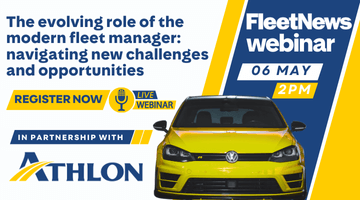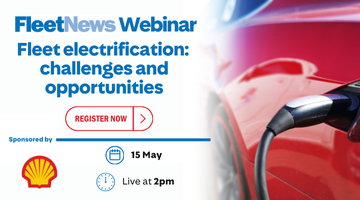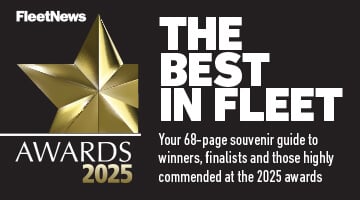While many fleet managers are convinced of the case for putting together a programme for managing occupational road risk (MORR), getting buy-in from senior management or the board can be a more tricky business.
To ensure buy-in at the highest levels, a fleet manager's approach requires a structure and solid arguments.
The Royal Society for the Prevention of Accidents (RoSPA) has put together a useful step-by-step guide to the arguments you will need to formulate and how best to go about collating evidence.
According to Roger Bibbings, occupational safety adviser for RoSPA: 'Even though their staff are likely to be exposed to relatively high levels of risk when at work on the road, far too many organisations have yet to integrate MORR into their existing health and safety management arrangements.
'As a result of campaigning by RoSPA and other organisations, the case for managing occupational road risk (MORR) is continuing to grow but it still remains a largely unrecognised health and safety issue in far too many businesses.'
Bibbings claims there is a powerful business case because occupational road accidents imposes major costs.
'The cost of establishing a system for MORR and a few proven Occupational Road Risk (ORR) control measures can quickly be recouped as a result of reduced accident and related costs,' he said.
'Indeed, as with other aspects of good health and safety management, the organisation can quickly find that its road safety programmes are making a significant contribution to the bottom line.'
What to do next
Fleet managers committed to improving road safety performance need to develop a series of strategies for raising awareness at all levels and getting senior managers to buy-in to the need for a comprehensive approach to MORR.
Bibbings said: 'The starting point should be an 'Initial Status Review' (ISR), clearly setting out data on the numbers of people at risk, current accident rate, common causes and costs involved and an assessment of the human and financial savings and other business benefits that could be won by putting in place a robust risk management approach.
'Everyone in the organisation needs to be convinced there is a problem. Simply counting crashes, injuries and costs for the first time and talking about the impact of crashes on individuals and their families can be extremely motivating.
'The results of this sort of approach and ISR should be considered at board level, with the proposal that an MORR action programme be organisation.'
A team approach
RoSPA recommends that a small team is set up under the leadership of the board level director who oversees health and safety issues. This team could include managers, safety representatives and professionals from areas such as health and safety, fleet management, risk management and human resources.
There are a number of key elements to the plan. These include establishing effective assessment and monitoring, providing safety advice to drivers and developing monitoring arrangements. Bibbings says that before investing in driver training or other safety measures, it is vital that appropriate training is provided for all line managers of staff who drive or work on the road.
He added: 'Forward-thinking organisations, which have already developed a modern, proactive risk management approach and have a strong health and safety culture, will have few difficulties in embracing this sort of approach to MORR.
'They will also be keen to learn from good practice developed by other businesses by benchmarking through their trade associations and other networks. For those that have yet to find this path, tackling MORR could well provide the organisational learning experience that will help them establish a cycle of continuous improvement in all areas of risk management.
'Once high standards of occupational road safety become an established part of the way an organisation does business, the numerous safety and financial benefits involved quickly become apparent to others and the effect can spread rapidly to others. All it takes is understanding, vision and commitment.'
The Initial Status Review should include:
The ISR process
Because of the need to raise awareness and secure 'buy-in' across the whole organisation, ISRs are best undertaken on a team basis with clear reporting lines to senior managers within the organisation.
Disciplines that might be involved include line managers, health and safety advisers, fleet managers, insurance managers and workforce representatives such as safety officers. Involvement of a board level director to chair the process also has many advantages. It may also be useful to involve external partners such as insurers/ brokers, vehicle providers, local road safety organisations, trade associations and MORR service providers.
A planned approach is required, divided into seven phases:
1. Design of the review
2. Taking initial soundings
3. Collecting documentary and other evidence
4. Integrating and analysing evidence
5. Report writing
6. Formulation of prioritised recommendations for action
7. Presentation of conclusions to the board
Results
Results should be integrated into a qualitative report, including prioritised recommendations indicating areas for action.
Reasons to act
Source: RoSPA
How fleet safety can boost a firm's image
THE benefits of running a safety-conscious fleet usually centre on minimising costs, protecting employees and limiting damage.
But by adopting safer fleet policies, companies can also boost brand image, improve publicity and attract positive media coverage.
Industry safety expert Dr Will Murray, a research director for Interactive Driving Systems (IDS) and a visiting senior research fellow at the Centre for Accident Research and Road Safety in Queensland, Australia, has looked at the relationship between fleet safety and marketing. He believes there is a direct link between safe fleets and a positive company image.
Murray said: 'There is no doubt that good safety performance can guarantee much more media coverage and speaking opportunities on the safety, transport, fleet, environmental and management conference circuit and opportunities to contribute to industry publications than any amount of planned business development.
'There are marketing benefits from safety. Every fleet and other safety professional should spend time with, getting to know, and working closely with the marketing and public relations people in their organisation.'
Fleets can not only benefit from the benefits of marketing a safer fleet, but can also generate support from their own employees, according to Murray.
He said: 'As well as external coverage this can also benefit safety performance internally, as a large element of safety improvement work is about marketing, selling and persuading people to change the way they behave.
'Working closely with, learning from and gaining the support of marketing people can also help to develop better internal marketing campaigns aimed at promoting safer driving.
'Safety can also help support marketing by allowing organisations to get involved in their local community. Many work-related crashes happen close to home, meaning that fleet operators have a major impact on their local community, including their own employees and family.'
However, a fleet risk management programme can have benefits other than safety for the organisation, according to Murray.
His research found that running a safer fleet can have a direct effect on business quality, efficiency and the environment.
He said: 'Many issues are much wider than just road safety. For example, how do wider business changes affect people's driving safety? How do work schedules, payment systems and bonus schemes affect the risks drivers have to take? What work instructions are staff given and how do they affect driving? Have any business changes affected the way people report incidents?
'An effectively-run 'culture/ community/management-based' programme as part of the wider fleet safety programme can motivate managers and staff to become change agents who lead by example and also bring many potential marketing opportunities.
Externally, a big employer has such a presence and brand that it could do much more to affect the local communities in which it operates.'
Raising your safety profile
Initiatives fleet executives could adopt:
Source: Dr Will Murray
















Login to comment
Comments
No comments have been made yet.